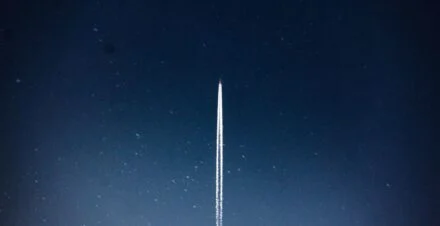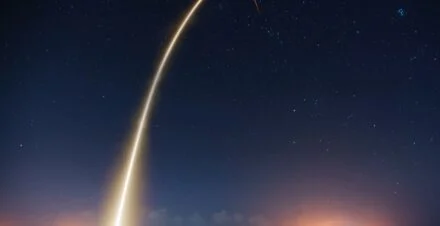On July 12, 2020, LeoLabs detected a breakup event of a Japanese H-2A debris object (NORAD ID 43673) in space. The event was first reported by the 18th Space Control Squadron (18 SPCS) reporting an approximate breakup time of 08:44 UTC:
Upon receiving this news, the LeoLabs team rapidly looked at our tracking data for this object and immediately saw clear evidence of the breakup. This post will take a closer look at our evidence for this event and what exactly we observed.
For each LeoLabs radar observation, our automated processing system takes the collected measurement data and generates a number of unique products, one of which is a series of data plots corresponding to our Radar Signature Returns (RSRs). These RSR plots provide a visual means to understand the strength and location of the radar signals received back by LeoLabs radars when searching for an object.
The plot below shows an RSR for the H-2A debris object, prior to its breaking up, along with a 3D visualization of the same radar pass. The X-axis is time (seconds) of the observation and the Y-axis is the range (km) of the object from the radar making the measurements.
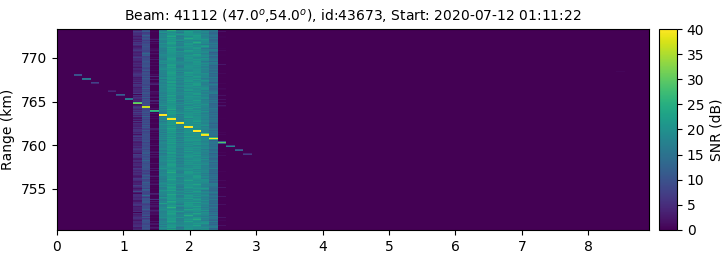
LeoLabs RSR plot for the H-2A object from the radar pass prior to the breakup event
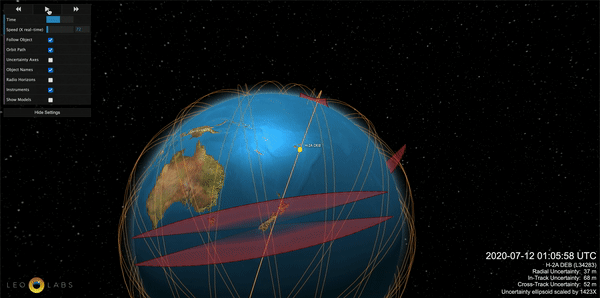
The corresponding radar pass for the H-2A object prior to the breakup event
When an object is detected during a radar pass, multiple measurements are collected over a period of a few seconds while the object is in the radar’s field of view. The sloped line in range as a function of time is a result of the motion of the object as it passes through the radar field-of-view, as shown above. (Depending on whether the object is moving towards or away from the radar during the pass, the lines may slope upward or downward.)
The above plot shows a typical RSR for the H-2A object — a single, clear line indicating only one object is detected during the pass. However, following the breakup event for this object, the next radar pass occurring at 14:31:03 UTC generated this RSR:
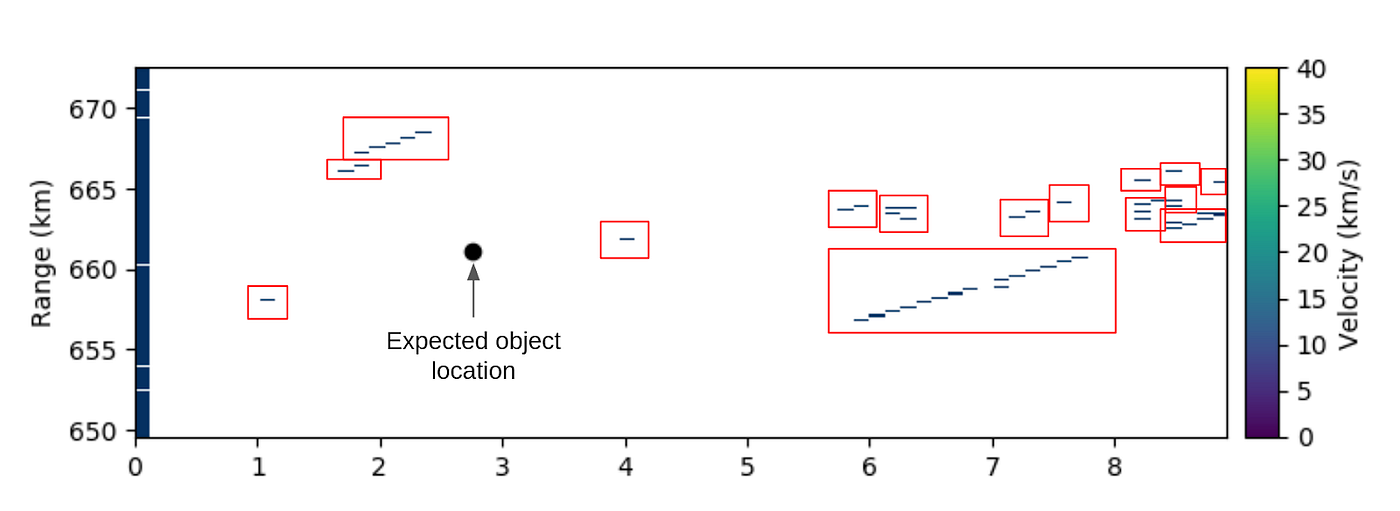
LeoLabs RSR for the H-2A object immediately following the breakup event
Here we see very strong indication of a breakup event: what was previously one detected object now appears to be multiple new objects closely spaced where the original H-2A object was expected to be.
We have annotated this plot with red boxes to indicate what are likely new individual objects that resulted from the breakup. Additional RSRs from subsequent radar passes provided similar information. LeoLabs then set its radars to search for additional debris objects in an expanded area for further data gathering.
It is worth noting that although the H-2A object that experienced this breakup is designated as a debris object, it is quite large. LeoLabs was tracking this object very well 2–4x per day prior to the event, and our measured radar cross section (RCS) data indicated an approximate size of 2.43 m². The breakup of a sizable object like this is expected to create a large number of new debris objects, depending on the nature of the breakup. Following detection of the breakup, 18 SPCS reported 53 new debris objects, which both 18 SPCS and LeoLabs will begin tracking and cataloging, and it is expected that a large number of additional debris objects below the tracking limits of current radars will also have been generated. Unfortunately, much of this debris is expected to stay in orbit for decades.
The question may then be asked, what caused this object to break up in the first place? We do not know for sure at this time. There is no initial evidence that this was caused by a collision with another object (an opinion also shared by 18 SPCS). The LeoLabs conjunction screening system did not flag any close approach events that would have been realistic candidates for a collision. However, it is still feasible that a collision with a small, untracked piece of debris may have occurred and caused the breakup. There are currently an estimated 250,000+ such small, untracked objects in LEO >2cm in size that pose a very real threat to both operational satellites and human spaceflight missions.
To address this, LeoLabs is continuing to build additional high-powered radars capable of tracking this small debris. Read more about our recent announcement to build our 4th radar in Costa Rica this year:
